Laughing Whistle Review
(Review written Sept 2005)
- Preface
- Noah Herbison has been making Laughing Whistles for quite a number of years. The soprano D model is a neat telescoping whistle, which shrinks down to about six inches to fit in a pocket. This works really well! I owned one of these years ago, around 2000 or 2001, and really liked it. A friend has let me borrow hers, for review, and it's nice to see that Noah is still turning out great whistles.
- At a Glance
- Whistle Reviewed
- Laughing Whistle
- Models Available
- High and Low D
- How Acquired
- on loan
- Construction
- Brass with wooden fipple and Fimo clay in the windway
- Price at Time of Review (in US Dollars unless otherwise noted)
- $79 to $85
- Available From
-
Irish Flute Store
Direct from Noah Herbison
- Appearance
- The whistle has a sleek and simple brass appearance. The overall construction is well executed, and is pleasing to look at.
-
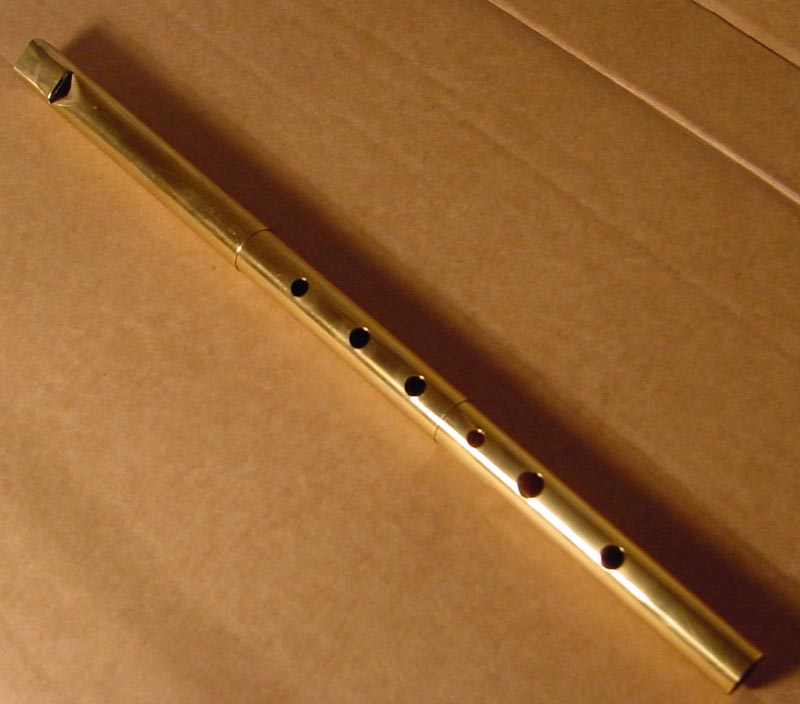
Here's the full whistle. You can see the bent "Clarke style" ramp, as well as the three sections of the whistle.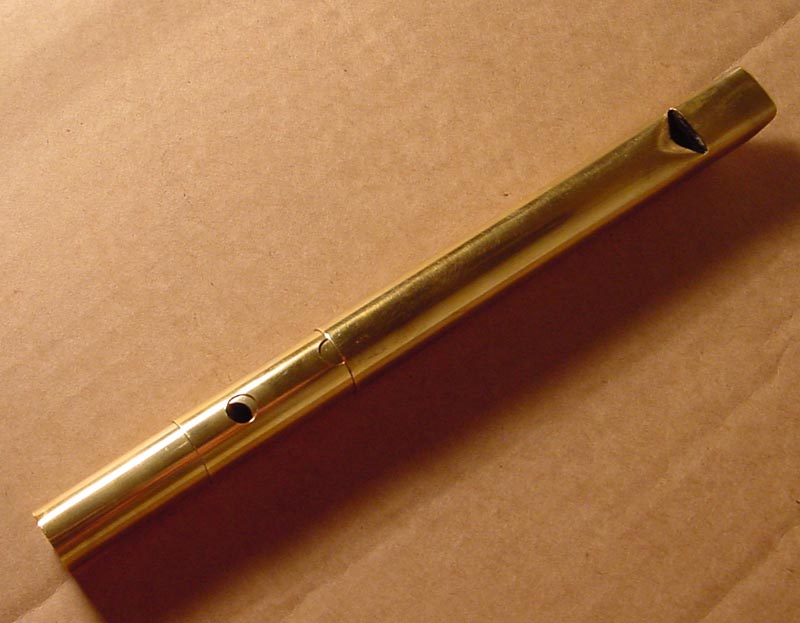
Here's the whistle closed. It's about 6 inches long in this configuration, and easily fits in a front pocket.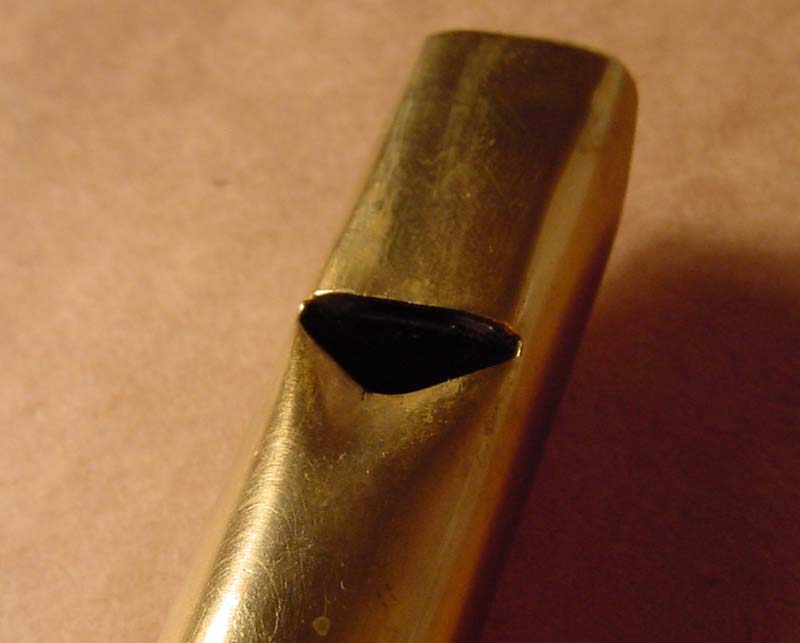
Here's a close-up of the mouthpiece. You can't really see it, but inside the windway here is a little Fimo used to narrow the windway. Noah uses this as part of the voicing process, and I can attest from personal experience, the whistle is much sweeter for having it in there. I'm told that after some reports of the clay coming out, Noah has started gluing it in there with epoxy to make it more secure. In the unlikely event that if it ever comes out, Noah says that you can glue it back in place with a touch of 5-minute epoxy.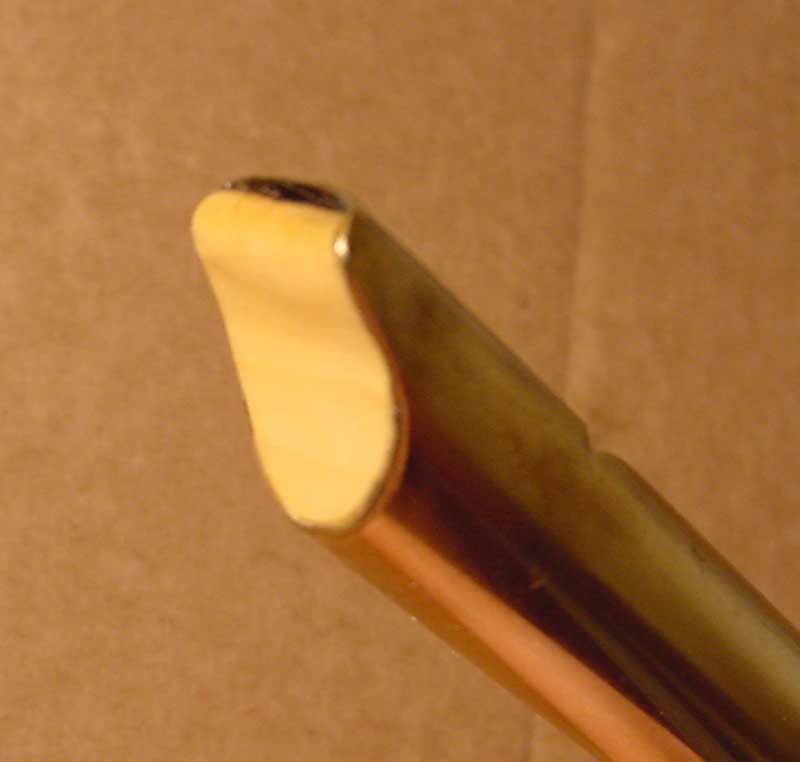
Here's another angle on the mouthpiece, showing the fipple area. This is wood, but it's been coated so it has a laminated or plastic-like feel to it. Like most high-end whistles, the beak is on the shorter side.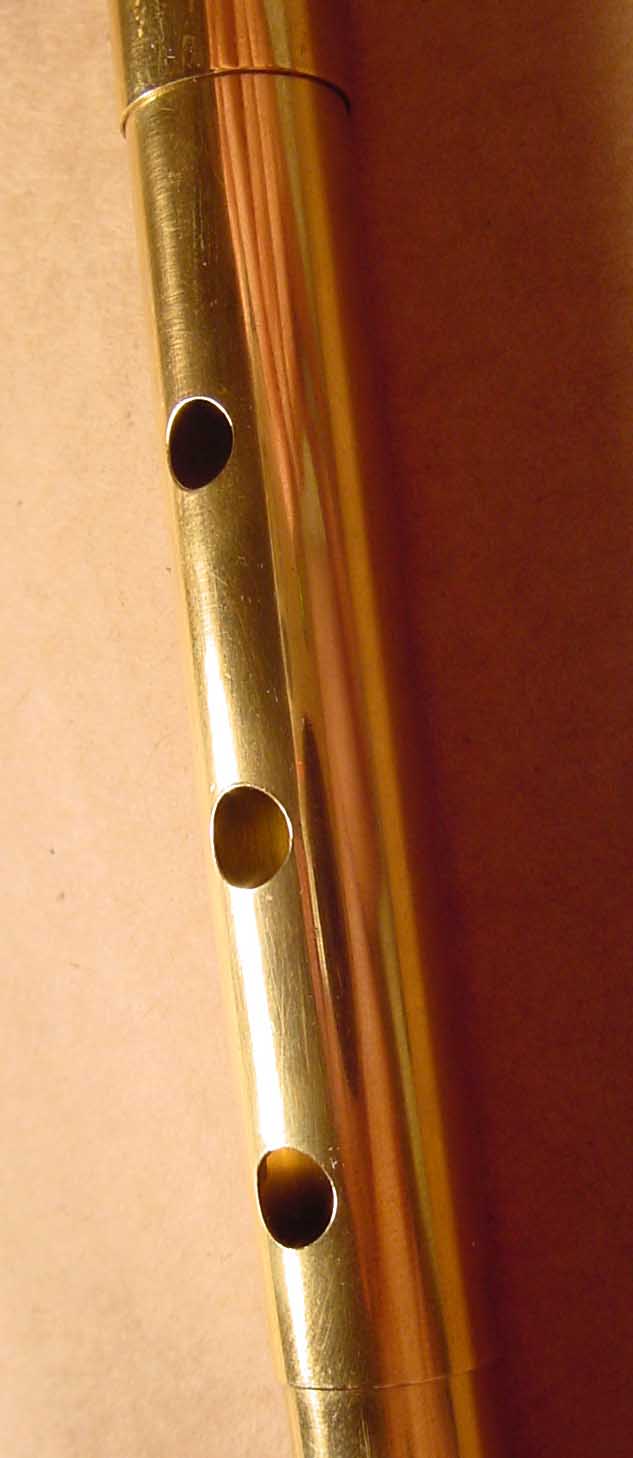
I usually take a shot at the end of the whistle, showing the last three holes. This time, I took a shot of the middle, so you could get a better look at the telescoping look. Everything is very clean and well made, and the holes are smooth and very nicely made on this whistle. The last hole is a smidge off center, but like 1mm or less, so I didn't think it worth getting a picture of.
- Playing Characteristics
- Very sweet and quiet. The whistle has no harshness at all, and is just angelic throughout it's range. It's also quite an easy-blower, so it feels like you put it in your mouth and beautiful sounds just come out effortlessly. Interestingly enough, this whistle's tone can be affected by the angle you put it in your mouth. I normally play with my whistles off to one side and angled a bit down. Played this way, the whistle gets a bit airy, especially in the second octave. Much like the O'Brien I reviewed a while back.
-
Sound clips of the whistle:
Down by the Sally Gardens
Off to CaliforniaVolume: On the quiet side. Easily far quieter than any of the cheapies I pitted it against. Totally blown away by the Copland and SZBE in terms of volume. Not for a really loud session. Well, unless you were a bit shy and didn't really want to be heard anyway.
Responsiveness: Quick and responsive. Ornaments and such just trip off the whistle. It's a fun little whistle to play and feels quite nimble.
Tuning: The tuning is pretty good on this whistle. Noah has put an in-tune mark to help quickly align the headpiece, but I found that the whistle was pretty sharp at this mark when warmed up. The F# needs a little push to bring it into line compared with its neighbors, especially so in the second octave. Otherwise, no real surprises here.
C-natural: OXXOOO cross fingered C-natural is sharp by about 40 cents. OXXOXX is just about perfect.
Hole size and placement: The holes are fairly evenly spaced, and nicely centered on the whistle--though as noted above, the bottom-most hole is a smidge off-center. I didn't really notice that until I scrutinized the instrument, though.
Air volume requirements: Extremely low. This whistle takes hardly any air at all. You just play and play without much effort on this whistle.
Air pressure requirements: Though the whistle has a slight amount of backpressure, this is also extremely low. It just doesn't take much push at all to play in either octave, though hitting the highest notes (second octave A and B) does take more work than the rest of the whistle.
Clogging: All of the Laughing Whistles I've played have been extremely fast cloggers. When they clog up, they quickly fade away until they stop playing. You definitely will want some kind of relief here. Duponol may help, but I can't say for sure, since this was a loaner whistle.
Wind Resistance: This whistle isn't really that wind resistant. I was able to play it in the lightest breezes, but really, works best indoors.
- Summary
- The whistle has a lovely sweet tone, it just has no stamina without some kind of treatment. Clogging is this whistle's biggest problem. After half an hour or so the whistle was just unusable until I let it sit and dry out for a few minutes. And then, it would only last for a single repetition or so. I ended up going with the Off to California recording I've posted, not because it was my best take, but because it was the best one I had without clogging issues. If Duponol solves the clogging issue, I imagine I would play this whistle all the time. I know I played the heck out of the first one I had.